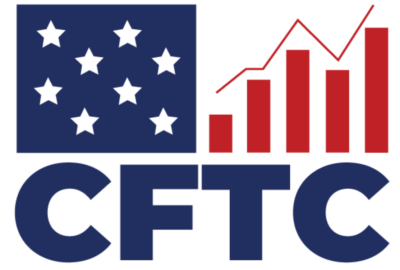Bloody syringes in VA hospital laundry bins inject ‘better staff training’ into GAO recommendations
VA is taking steps to protect laundry staff at its hospitals, after an investigation found needles containing blood and other substances in laundry bins at a me...
- The Department of Veterans Affairs has found evidence of sexual harassment carried out by senior leaders in an office that normally handles these types of complaints. VA’s investigation recommends disciplinary action against five current and former VA officials. That includes the firing of one supervisor and clawing-back bonuses paid for high-performance ratings. Its report substantiates claims of a high-ranking VA official “sexting” with a VA employee subordinate to him, and sharing graphic images and messages with a second employee. The report also backs up allegations of “bullying and abusive behavior” at VA’s Office of Resolution Management, Diversity & Inclusion. VA Secretary Denis McDonough told lawmakers he takes the report’s recommendations for disciplinary action seriously. “There is no question that I’ve failed in this instance. And I’m learning from that feeling. And we’re taking concrete steps to address it," McDonough said.(VA sexual harassment investigation recommends firing, recouping bonuses from supervisors - Federal News Network)
- In cases of employee misconduct, supervisors at the Department of Homeland Security are less likely to be disciplined than non-supervisors. A new Government Accountability Office report found that DHS could do better in analyzing and responding to cases of employees who behave inappropriately at work. DHS said the difference in disciplinary action could be because fewer allegations against supervisors rise to the level of misconduct. But GAO still recommended that the department start requiring all misconduct reports to make note of whether or not the employee is a supervisor.(DHS employee misconduct report - Government Accountability Office)
- Agencies have a new set of critical and emerging technologies from which to guide their work, that could impact national security. On Monday, the Office of Science and Technology Policy outlined 18 technology areas to help inform governmentwide and agency-specific efforts concerning U.S. technological competitiveness and national security. This is OSTP's first update to the critical and emerging technologies list in two years. OSTP stressed that agencies should not use this list as a way to develop policies or set funding priorities. Experts from 18 agencies across the government developed the top-level technologies and subfields that fall under each area, including hypersonics, human-machine interfaces, and data privacy and security technologies.
- The Coast Guard has a new lead technology executive. Rear Adm. Russell "Rusty" Dash is the new chief information officer and assistant commandant for command, control, communications, computers and IT at the Coast Guard. He replaces Rear Adm. Chris Bartz, who became the deputy CIO at the Homeland Security Department in January. Federal News Network has learned Dash will not start until mid-June. In the meantime, Coast Guard deputy CIO Brian Campo will remain in the acting role. Dash joins the CIO's office after serving as the commander of the Coast Guard's Personnel Service Center for the last 18 months. He has a technology background, having also served as the commanding officer of the C5I Service Center. (Coast Guard names new CIO - U.S. Coast Guard)
- After getting feedback from sailors, the U.S. Navy has updated its uniform and personal appearance policy, effective immediately. The uniform policy update permits sailors to have their hands in their pockets while in uniform, only when doing so does not compromise safety or prohibit the proper rendering of honors. The service is also permitting sailors to wear the bucket cover with service dress and dinner dress uniforms. The tiara is now optional for all female sailors when wearing dinner dress blues and white jacket uniforms. Sailors can purchase the tiara at the Navy Exchange online. (Navy updates its uniform policy - U.S. Navy)
- Two executive orders later, agencies are once again refreshing their efforts to make federal services more equitable. The Social Security Administration is trying to simplify the application for its Supplemental Security Income program. The Small Business Administration is streamlining its disaster assistance program, to try to reach more people. The Office of Personnel Management is conducting a study to identify barriers to its paid parental leave program. The agencies’ efforts are all part of the Biden administration’s goal to improve racial equity and better support underserved communities’ access to federal services. Just this week, dozens of agencies are releasing their updated plans to support the goal.
- The Department of Veterans Affairs is taking steps to protect laundry staff at its hospitals, after an investigation found needles containing blood and other substances in laundry bins at a VA medical center in Richmond, Virginia. VA’s probe, which was launched following a whistleblower complaint, recommends better tracking of linens sent with medical waste, and to institute better training of VA clinical staff on the proper disposal of syringes.
- The Space Force is creating a Space Futures Command to develop and validate cutting-edge concepts and conduct experimentation and wargames. The command will have three centers. The Space Warfighting Analysis Center will use advanced analytics and modeling to inform where the Space Force needs to be in the future. The Wargaming Center will allow the service to experiment with emerging technologies. And the Concepts and Technology Center will enable the Space Force to evaluate the technology it needs to respond to future threats. (Space Force introduces Space Futures Command - Air & Space Forces Association)
- The National Institute of Standards and Technology will help chart a course for the AI workforce of the future, if a bipartisan bill makes it through Congress. The AI and Critical Technology Workforce Framework Act would require NIST to identify the skills and abilities employees will need to work with AI and emerging technology. The agency would base the AI workforce framework off similar guidance it has for the cybersecurity workforce. Sens. Gary Peters (D-Mich.) and Eric Schmitt (R-Mo.) introduced the bill. (Peters & Schmitt introduce bipartisan bill to boost America’s AI workforce pipeline - Senate Homeland Security and Governmental Affairs Committee )
Copyright © 2024 Federal News Network. All rights reserved. This website is not intended for users located within the European Economic Area.
Peter Musurlian
Peter Musurlian is a producer at Federal News Network.
Follow @PMusurlianWFED






